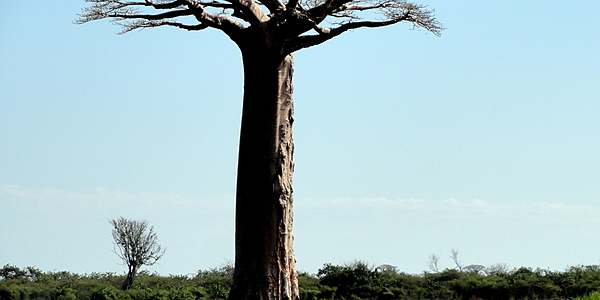


From the edible fruit to the bark, there are many uses for the baobab in Madagascar. If you go to the Avenue of the Baobabs during your trip to Madagascar, you will probably notice that the bark seems to have been stripped from some of them. The local populations use baobab fibre to manufacture ropes, roofs and other objects.
But the baobab has many other uses. In traditional medicine, the leaves and the bark are used in decoctions and help to treat many diseases, including diabetes. The fruit, whose pulp is very rich in vitamin C, is consumed dry or squeezed to produce a juice that children love! Finally, the seeds, once freed from the surrounding pulp, are crushed to obtain an edible oil.
The baobab is often revered as an intermediary in the worship of ancestors, through which it is possible to communicate with the dead. Offerings are made at the foot of the trunk to seek their protection, heal a relative or to invoke rain. The faithful place money, rum and various objects there. So beware, these trees are considered as sacred and "fady" (taboos) may apply - don't hesitate to ask your guide about what you have the right to do or not.
But the baobab is also venerated in cults related to women and children. In the north of the island, in a ritual called Fankabe, new-borns are bathed in a decoction of baobab bark so that they grow up healthy and become strong.

On the Mahafaly plateau in the south of Madagascar water is rare, especially in the dry season. The inhabitants have found an unusual solution to respond to this shortage: baobab tanks. When heavy rains fall in the wet season, water is quickly recovered and then stored in the baobab, whose trunk has been previously been dug out. Once the dry season returns and the sources of water have dried up, the inhabitants use the water stored in the baobab trees, allowing them to fulfil their needs until the next rainy season.
This little-known use is unique in the world. It requires real expertise in order to not kill the tree - the profession of baobab digger is born! Once a tree of the required size has been found, the digger carves out a "window" where the water will be stored and then retrieved when the time comes. Once dug out, the baobab tank needs annual maintenance because it is a living tree and grows back little by little until the window disappears!